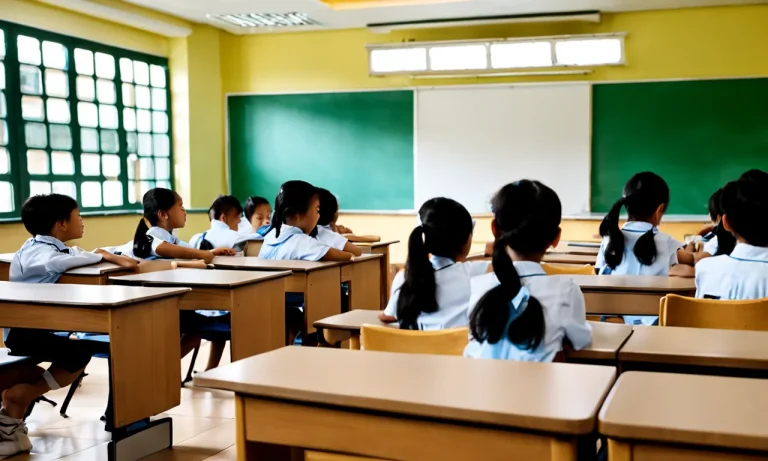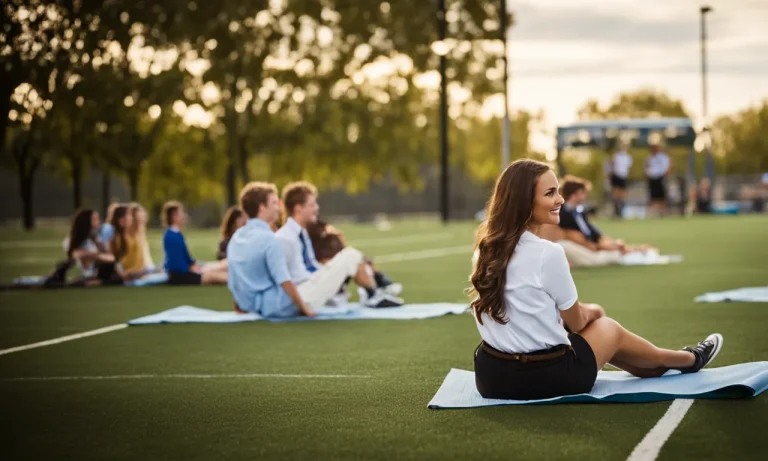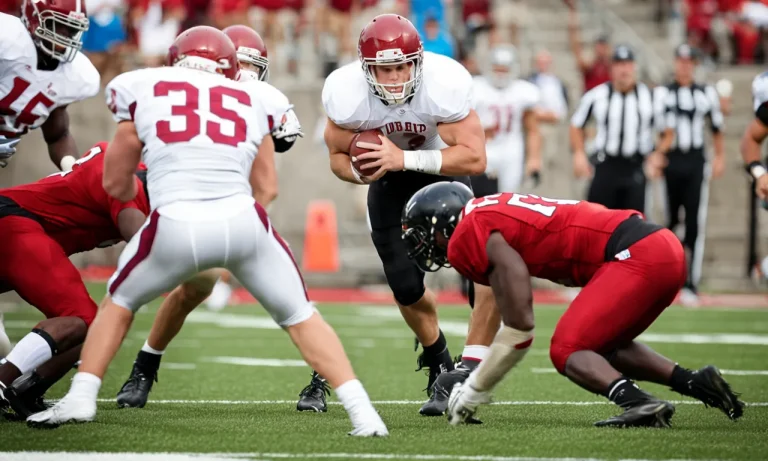Joining the Reserve Officers’ Training Corps (ROTC) while still in high school can provide many benefits for students interested in military careers. However, ROTC requires a significant time commitment and isn’t right for everyone.
If you’re short on time, here’s a quick answer to your question: ROTC can provide leadership training, scholarships for college, and an early start on a potential military career, but also requires a big time commitment and isn’t a good fit for students not interested in the military.
In this comprehensive guide, we’ll explore the pros and cons of participating in high school ROTC programs so you can decide if it’s the right choice for you or your student.
The Benefits of High School ROTC
Participating in the Reserve Officers’ Training Corps (ROTC) program in high school can offer a range of benefits for students. Not only does it provide valuable leadership and personal development opportunities, but it also opens up scholarship opportunities and provides early military experience.
View this post on Instagram
Leadership and Personal Development
One of the key benefits of high school ROTC is the emphasis on leadership development. Students involved in ROTC learn important skills such as discipline, teamwork, and effective communication. These skills are not only valuable in a military setting, but also in any future career or personal endeavor.
ROTC helps students develop confidence, self-discipline, and a strong work ethic, which can greatly benefit them in various aspects of life.
According to a study conducted by the RAND Corporation, students who participate in JROTC (Junior Reserve Officers’ Training Corps) programs, which are often offered in high schools, show higher levels of academic achievement and improved graduation rates compared to their non-JROTC peers.
The structured environment and focus on academic excellence provided by ROTC programs contribute to these positive outcomes.
Scholarship Opportunities
Another significant advantage of high school ROTC is the potential for scholarship opportunities. Many colleges and universities offer scholarships specifically for ROTC cadets. These scholarships can cover tuition, fees, and even provide a monthly stipend.
By participating in ROTC in high school, students increase their chances of receiving these valuable scholarships, which can greatly reduce the financial burden of pursuing higher education.
Furthermore, participating in ROTC can also make students eligible for national-level scholarships, such as the Army ROTC Scholarship or the Navy ROTC Scholarship. These scholarships often cover full tuition and fees and provide a generous living allowance.
They are highly competitive, but the experience and skills gained through high school ROTC can significantly enhance a student’s chances of receiving such prestigious scholarships.
Early Military Experience
High school ROTC also provides students with a valuable opportunity to gain early military experience. Through ROTC, students have the chance to learn about military customs and traditions, participate in physical training, and even gain hands-on experience with military equipment.
This exposure to the military can help students make informed decisions about their future career paths and develop a deeper understanding of the military’s role in society.
Moreover, the early military experience gained through high school ROTC can provide a head start for students who choose to pursue a career in the military. By already having a foundation of knowledge and experience, these students may be better prepared for the challenges of basic training and further military education.
View this post on Instagram
The Potential Drawbacks of High School ROTC
While there are many benefits to participating in the Reserve Officers’ Training Corps (ROTC) program in high school, it is important to consider the potential drawbacks as well. Here, we will explore some of the possible downsides of enrolling in ROTC during your high school years.
Significant Time Commitment
One of the main drawbacks of high school ROTC is the significant time commitment it requires. Students involved in ROTC often have to dedicate a considerable amount of time to training, drills, and other program activities.
This can sometimes interfere with their ability to participate in other extracurricular activities or take on part-time jobs. It’s essential for students considering ROTC to carefully weigh the commitment required and consider how it might impact their overall high school experience.
Not a Good Fit for All Students
While ROTC can be an excellent opportunity for certain individuals, it may not be the right fit for everyone. The program is structured around military values and discipline, which may not align with the interests or goals of every student.
It’s important for students to assess whether they have a genuine interest in the military and if they are comfortable with the structure and expectations that come with participating in ROTC.
Can Limit Other Extracurriculars
Participating in high school ROTC can sometimes limit a student’s ability to engage in other extracurricular activities. The time commitment and demands of the ROTC program may make it challenging for students to juggle multiple commitments effectively.
This could potentially prevent them from fully exploring other interests or pursuing leadership roles in different clubs or organizations. It’s crucial for students to consider the impact that ROTC may have on their ability to participate in other activities that they may value.
Ultimately, the decision to join high school ROTC should be carefully considered by each individual student. It’s important to weigh the potential drawbacks against the benefits and determine if the program aligns with their interests and goals.
By doing so, students can make an informed decision about their involvement in ROTC and ensure that their high school experience is well-rounded and fulfilling.
View this post on Instagram
Key Factors to Consider About ROTC
ROTC Requirements
Joining the Reserve Officers’ Training Corps (ROTC) in high school is a decision that requires careful consideration. One of the key factors to think about is the ROTC requirements. Students interested in ROTC must meet certain criteria, including physical fitness standards, academic performance, and the ability to meet the time commitments involved.
The physical fitness standards may vary depending on the branch of the military, but generally, students will need to pass a fitness test that includes activities such as running, push-ups, and sit-ups.
Additionally, maintaining good grades is essential to remain in the program, as academic performance is closely monitored. It is important for students to assess their abilities and commitment level before deciding to pursue ROTC in high school.
Commitment After High School
Another important factor to consider about ROTC is the commitment required after high school. While participating in ROTC in high school can provide valuable skills and experiences, it is essential to understand the obligations that come after graduation.
Students who participate in ROTC in high school and decide to continue their military career are typically required to serve in the military for a certain number of years. The specific commitment may vary depending on the branch of the military and the type of scholarship or contract the student has.
It is crucial for students to carefully evaluate their long-term goals and aspirations before committing to ROTC in high school.
ROTC vs Enlisting After Graduation
When considering ROTC in high school, it is important to compare the advantages and disadvantages of participating in the program versus enlisting after graduation. One advantage of participating in ROTC is the potential to receive a scholarship to help cover the cost of college tuition.
This can be a significant financial benefit for students and their families. Additionally, ROTC provides students with valuable leadership skills and opportunities for personal growth. On the other hand, enlisting after graduation allows students to start their military career right away without the added commitment of participating in ROTC throughout high school and college.
It is crucial for students to weigh the benefits and drawbacks of each option and determine which path aligns best with their goals and aspirations.
Conclusion
ROTC can be a great opportunity for high school students interested in military leadership, providing scholarships, structure, and career skills. However, the time commitment is substantial, and ROTC should only be pursued by students planning on military careers.
Consider your goals and interests carefully when weighing the pros and cons of ROTC during high school.






